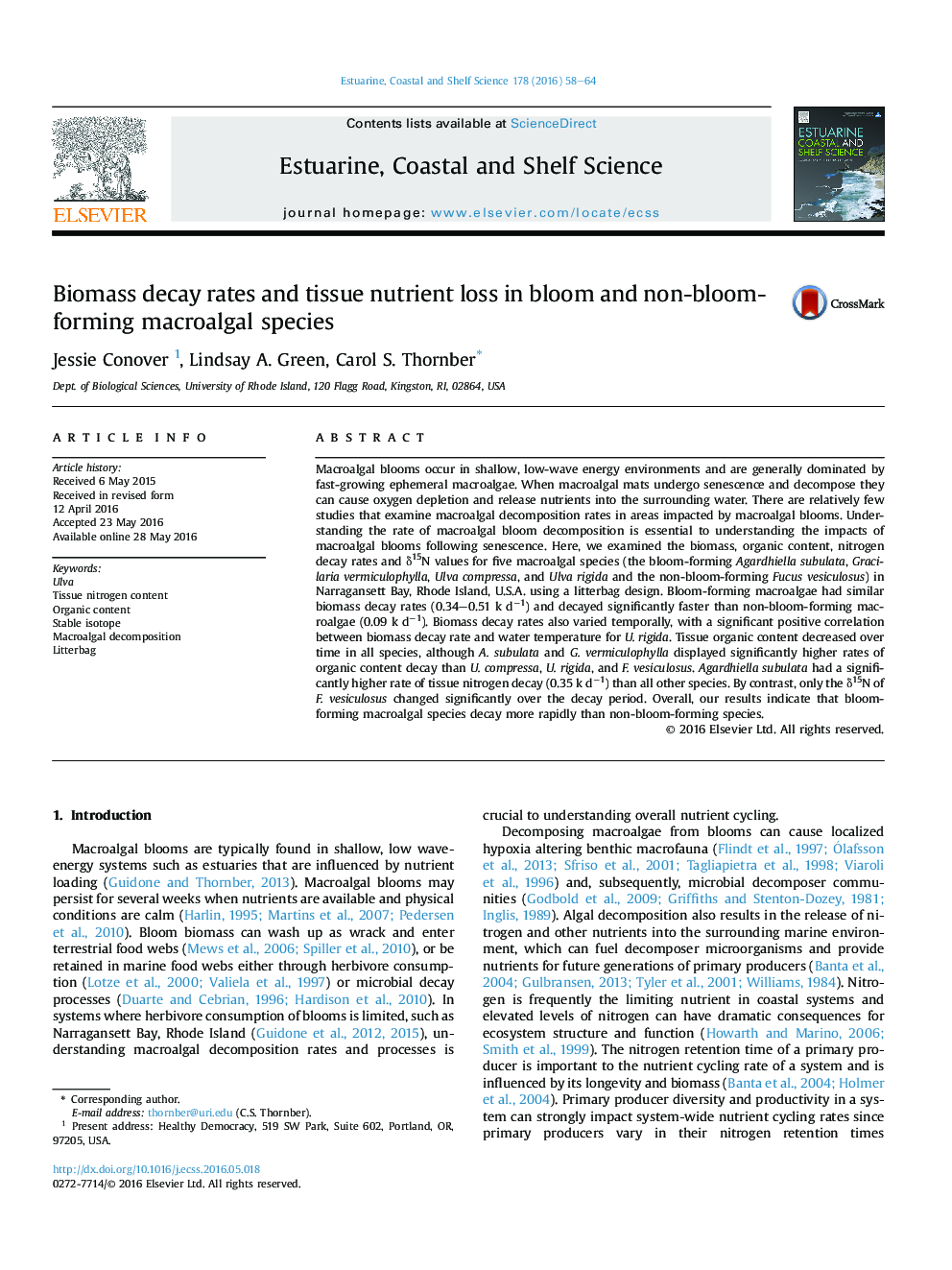| کد مقاله | کد نشریه | سال انتشار | مقاله انگلیسی | نسخه تمام متن |
|---|---|---|---|---|
| 6384469 | 1626621 | 2016 | 7 صفحه PDF | دانلود رایگان |
- Upon senescence, macroalgal tissues experience rapid loss of tissue organic and nitrogen content.
- Bloom-forming species have rapid rates of decay; decay of Ulva rigida is positively correlated with water temperature.
- Organic content decay is not always correlated with biomass decay and should not be used as a proxy.
- Nitrogen isotopic signatures change during decay but can be highly variable based on sampling location and nutrient history.
Macroalgal blooms occur in shallow, low-wave energy environments and are generally dominated by fast-growing ephemeral macroalgae. When macroalgal mats undergo senescence and decompose they can cause oxygen depletion and release nutrients into the surrounding water. There are relatively few studies that examine macroalgal decomposition rates in areas impacted by macroalgal blooms. Understanding the rate of macroalgal bloom decomposition is essential to understanding the impacts of macroalgal blooms following senescence. Here, we examined the biomass, organic content, nitrogen decay rates and δ15N values for five macroalgal species (the bloom-forming Agardhiella subulata, Gracilaria vermiculophylla, Ulva compressa, and Ulva rigida and the non-bloom-forming Fucus vesiculosus) in Narragansett Bay, Rhode Island, U.S.A. using a litterbag design. Bloom-forming macroalgae had similar biomass decay rates (0.34-0.51 k dâ1) and decayed significantly faster than non-bloom-forming macroalgae (0.09 k dâ1). Biomass decay rates also varied temporally, with a significant positive correlation between biomass decay rate and water temperature for U. rigida. Tissue organic content decreased over time in all species, although A. subulata and G. vermiculophylla displayed significantly higher rates of organic content decay than U. compressa, U. rigida, and F. vesiculosus. Agardhiella subulata had a significantly higher rate of tissue nitrogen decay (0.35 k dâ1) than all other species. By contrast, only the δ15N of F. vesiculosus changed significantly over the decay period. Overall, our results indicate that bloom-forming macroalgal species decay more rapidly than non-bloom-forming species.
Journal: Estuarine, Coastal and Shelf Science - Volume 178, 5 September 2016, Pages 58-64
